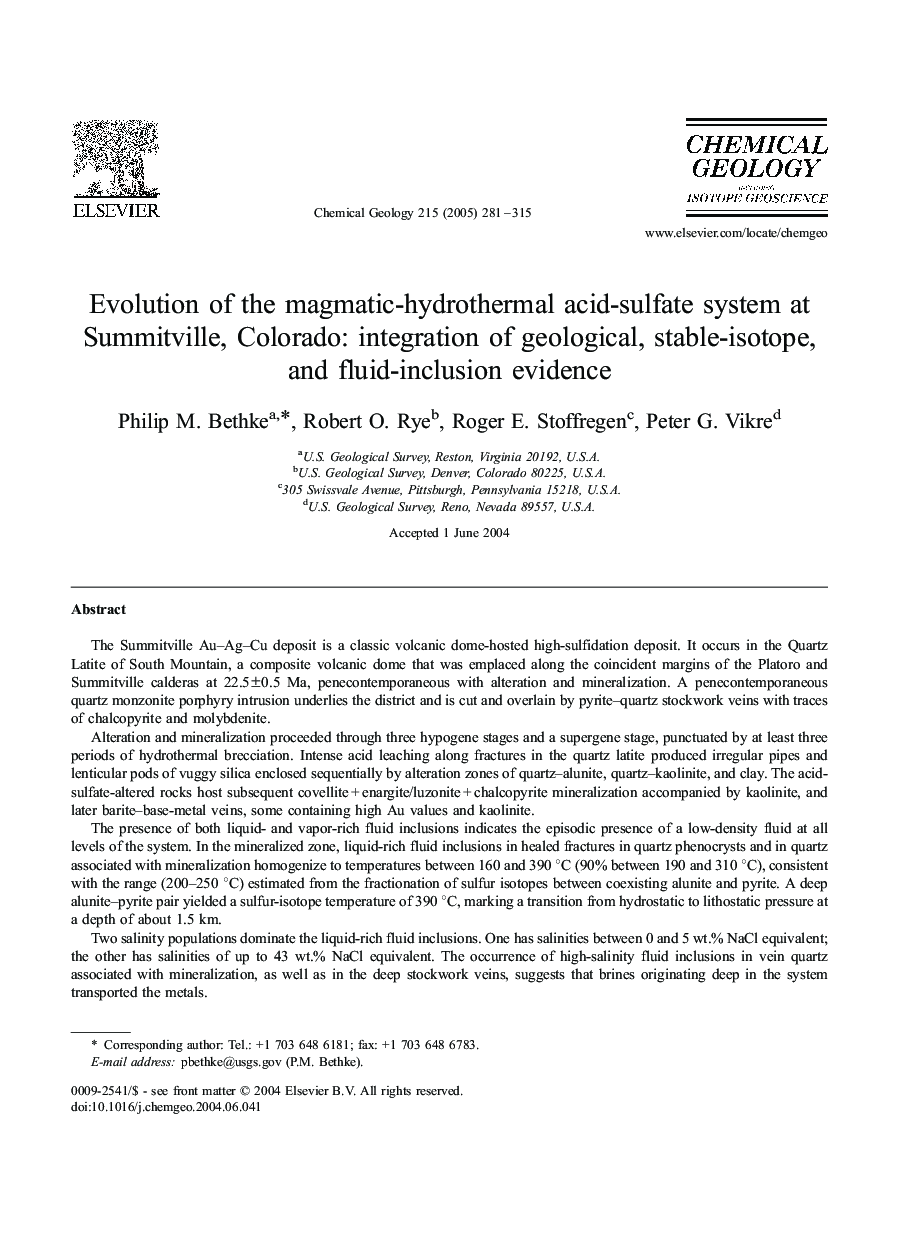| Article ID | Journal | Published Year | Pages | File Type |
|---|---|---|---|---|
| 9529217 | Chemical Geology | 2005 | 35 Pages |
Abstract
Fluid exsolved from the magma at depth had δDH2O and δ18OH2O values near â70â° and 10â°, respectively. During and following migration to the top of the magma chamber, the fluid underwent isotopic exchange with the partially crystallized magma and its solid and cooler, but still plastic, carapace just below the transition from a lithostatic to hydrostatic pressure regime. These evolved magmatic fluids had δDH2O and δ18OH2O values close to â40â° and 5â°, respectively, prior to release into the superjacent hydrostatically pressured fracture zone, wherein the fluids separated into a low-density phase and hypersaline brine. The low-density phase rose to the level of acid-sulfate alteration, where disproportionation of SO2 commenced upon condensation of the vapor plume causing the acid-sulfate alteration. Hydrogen and oxygen isotopic compositions estimated from deep kaolinitic wallrock alteration and fluid inclusions in quartz stockwork veins indicate the brine mixed with highly exchanged meteoric water at depth and rose to the ore zone, producing the Cu-Au-Ag mineralization. The composition of inclusion fluids in a single sample of enargite also indicates mixing between ore fluids and unexchanged meteoric water at shallow depths. The sulfate in fluids responsible for precipitation of most barite samples was of magmatic origin, but the δ34S of a single sample suggests mixing with sulfate derived from the atmospheric oxidation of H2S in an overlying steam-heated zone.
Related Topics
Physical Sciences and Engineering
Earth and Planetary Sciences
Geochemistry and Petrology
Authors
Philip M. Bethke, Robert O. Rye, Roger E. Stoffregen, Peter G. Vikre,
